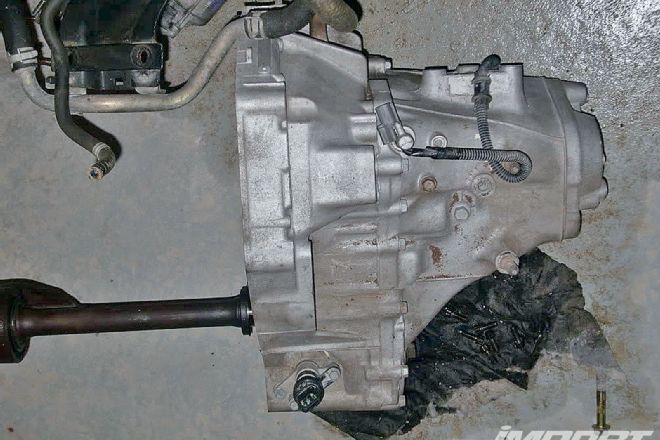Eric Hsu
We stumbled across an interesting website the other day:
http://wordsmith.org/anagram/index.html
For kicks, we decided to search the name of resident tech guru "Eric Hsu", and found it can scramble into some fitting arrangements (seen here with punctuation added):
"Uh . . . rice!" - Eric's choice sigh of desperation when he's asked for stupid advice, like Cavalier/Supra taillight conversions.
Such ire - The intense anger felt by Eric when being asked for stupid advice.
Ice rush - The dead-cold panic felt by those who realize they've asked Eric for stupid advice.
Cries, "Uh!!" - What such a person does when Eric exacts his revenge for having been asked for stupid advice.
Enter the domain of Eric Hsu at your own risk:
questionit@importtuner.com
Pick of the Litter
In your February '10 issue, the article "Ditch the Daily Grind" talked about rebuilding a Y80 GSR transmission. I ordered an Integra GSR LSD tranny online and they sent me a Y80 LSD transmission. The guy from the engine depot stated that the Y80 LSD tranny was from a rare '94-'95 GSR from Japan. I was wondering what the difference is between my Y80 and the Integra Type R S80 tranny and LSD? Do you have any suggestions that could help piece my tranny together?
-Sothia Chhom
via importtuner.com
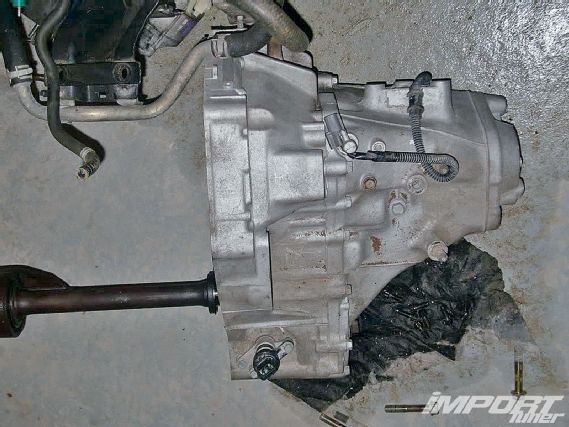 |
Transmission Selection, Grounding Kits, and More - Question It
|
Transmission Selection, Grounding Kits, and More - Question It
There are actually quite a few different versions of the Y80 and S80 transmissions. The main differences are the gear ratios and final drives, although even within the transmission models themselves there are different ratios and final drives. Unfortunately the only sure way to know which transmission you have is to count the teeth on the gears and ring and pinion, figure out the ratios, and match them to a model's specification sheet. Asking a couple different guys I know that build a lot of Honda transmissions, they both agree that the synchro designs are all very similar and are even interchangeable. They also agree that you either have to believe the guy you bought it from or take it apart and match the specs to properly identify which year and model your transmission came from. Honda uses both helical and "Salisbury" (clutch-type) differentials. Generally, the newer the transmission, the greater chance it has a helical LSD in it. The older it is the greater chance it has a Salisbury differential. As for tips for building transmissions, just make sure you follow the directions in the factory service manual and use the correct tools. If you don't have the right tool, don't ghetto rig it because there's a good chance you can fu*k something up pretty good.
Power Potential
I currently drive an '04 Honda S2000 and was thinking about purchasing a Sun Auto Hyper Ground System. I came across this product reviewed in your December '02 issue, in the article titled "Ground Out" which showed an S2000 that made an additional 2.1 whp after installing the Sun Auto grounding wires. What are the grounding points that would deliver the best horsepower gains?
-Buenagua
via importtuner.com
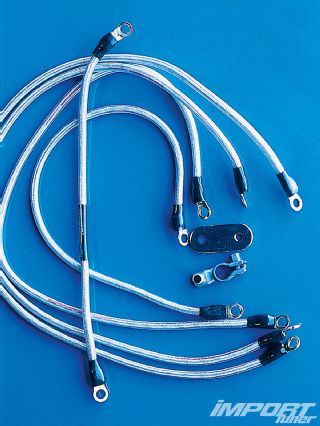 |
Transmission Selection, Grounding Kits, and More - Question It
|
Transmission Selection, Grounding Kits, and More - Question It
Power gains with grounding kits vary from car to car, but generally the best gains are found by grounding the battery, engine block, cylinder head, ignition coil(s), and valve cover. The best way to find the grounding points is to test the car on an inertia-type chassis dyno, such as a Dynojet 248, and test multiple grounding points during back-to-back runs. From my experience, I've also found that the older a car, the more horsepower the Hyper Ground System will make due to the car's degrading electrical system and lack of proper grounding from the factory. Make sure to use the genuine Sun Auto Hyper Ground cables because they really do use extremely high-grade copper wire in their kits.
Turbocharged Transformation
I just bought an '05 Mitsubishi Lancer ES (base model) with a 2.0L engine making 120 hp. I want to transform the car into a Lancer Evolution by putting its turbocharged engine into my Lancer. Can I do it? I'm sure I have to change the motor mounts, but do I also have to change the rear end, drive shaft, or other miscellaneous components? I asked my dealership but they had no answers on the swap-it was like talking to a brick wall.
-Mike Thompson
via importtuner.com
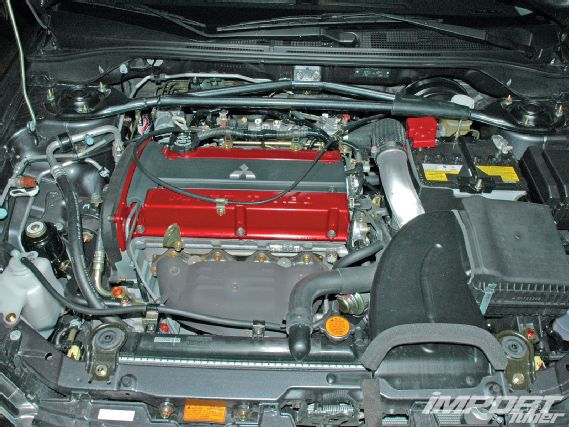 |
Transmission Selection, Grounding Kits, and More - Question It
|
Transmission Selection, Grounding Kits, and More - Question It
If you added up the time it would take to do this conversion and the money you'd have to spend, you'd probably end up with a car that cost more than an '03 Mitsubishi Lancer EVO VIII. Even if you had the fabrication, mechanical, and electrical skills to make it all happen, it wouldn't be worth your time. Your converted car wouldn't be completely developed so it would be rough around the edges with strange noises, clunks, and vibrations, and may not even be that reliable. Sell your '05 Lancer ES and buy yourself an '03 Lancer EVO VIII. Trust me; you'll be glad you did.
Injection Selection
I drive a five-speed, two-liter '00 Hyundai Tiburon that I plan on turbocharging. I recently purchased a T3 turbocharger and an external wastegate. I'm saving up for the rest of the parts in order to make 200 whp. What size injectors and boost pressure would I need to achieve my horsepower goal?
-Bryan Gibbons
via importtuner.com
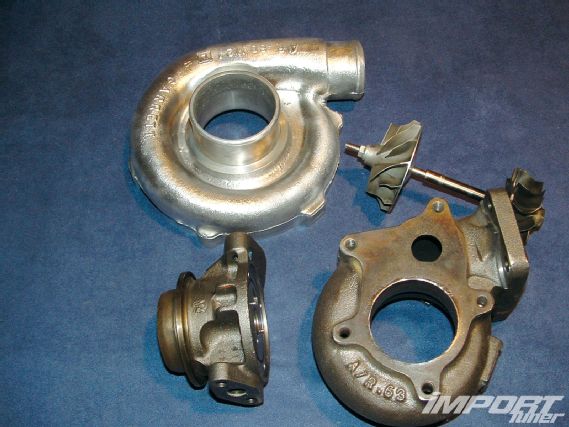 |
Transmission Selection, Grounding Kits, and More - Question It
|
Transmission Selection, Grounding Kits, and More - Question It
There are a lot of variables that can affect how much boost it would take to make 200 whp. First and foremost, the turbocharger's actual size plays a huge role in power. There are probably 90 different variations of a "Garrett T3" and you didn't specify which size you actually have. Second would be how well the exhaust system flows. Remember that a turbo is exhaust driven, so the amount of pressure, commonly called "back pressure," also play a huge role in how well the engine can breathe. Needless to say, the better the exhaust system flows, the more power the engine will make per pound of boost. Third, how well the boost is cooled via the intercooler will also play a huge role in the power output of the engine because it has a huge affect on how much ignition timing can be run before detonation or knock can occur. Lastly, how well the fuel and ignition are controlled will be instrumental in how smooth the power is delivered, how long the engine will last, fuel economy, and power output. Make sure you run colder Iridium spark plugs for a powerful spark. I'm not familiar with the Hyundai specifically, but for a low boost engine management solution, check out the Greddy E-Manage.
Reliable Engine Build
My new daily driver is an EP3 Civic Si, known as an SiR here in Canada. I know a lot about tuning my twin-turbo Z32 and other Nissans, but very little about Hondas. I'm looking to modify my K20A3 engine with an aftermarket header, bigger throttle body, and a set of cams to give it a little more power, but want to keep it reliable because of Canada's harsh winters-not to mention the polar bears we have roaming around.
-John Costa
via importtuner.com
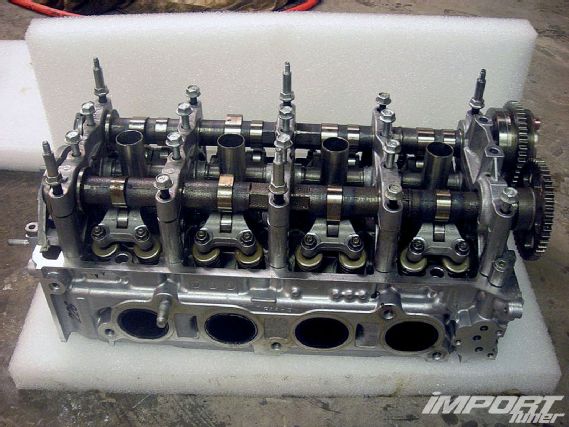 |
Transmission Selection, Grounding Kits, and More - Question It
|
Transmission Selection, Grounding Kits, and More - Question It
The K20A2 is factory rated at 197 hp and 142 lb-ft of torque in comparison to the K20A3, which is rated at 155 hp and 132 lb-ft of torque. The K20A2 cylinder head uses larger cylinder ports that can flow more CFMs, but the K20A3 is still a good engine. Cams, a header, and ECU work will yield good horsepower gains and still maintain Honda-like reliability. Try contacting Skunk2 Racing for cams and an intake manifold, Blox Racing for a header and a throttle body, and Hondata for ECU upgrades.
Horsepower Build
I own an SR20DET engine and am looking to upgrade with a set of cams, upgraded turbo, and aftermarket fuel system. I'm looking to get the Garrett GT2871R (.64 A/R) turbo. Would a set of Tomei 256 duration Poncams be a good fit with this turbo, or would you recommend their 260 duration Procams with titanium retainers and upgraded valve springs instead?
-JCU
via importtuner.com
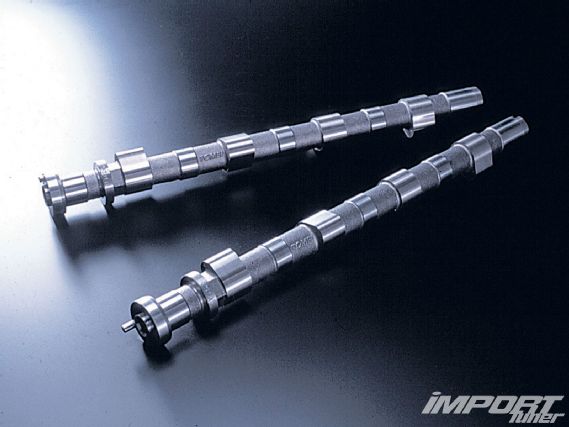 |
Transmission Selection, Grounding Kits, and More - Question It
|
Transmission Selection, Grounding Kits, and More - Question It
If you're willing to change valve springs and retainers, I'd recommend the Tomei 270-degree Procams with a 12.50mm lift to maximize the performance of the 2871R turbo. To save some money, keep the stock retainers (which are lightweight to begin with) and use a set of Cosworth SR20DET valve springs. The Cosworth springs provide the necessary seat pressure for high boost that many of the Japanese valve springs do not provide. If you have access to a dyno or will be having the engine professionally tuned, I would recommend a set of adjustable cam sprockets as well. You'll end up with a wider power band with more peak power to match the 2871R, even with a stock engine. If you were going to use a smaller turbo and shoot for less power, then I'd recommend the smaller Tomei 260-degree Procams with a 12.0mm lift. Whichever build you plan, I highly recommend a Cosworth FSL metal head gasket for the best possible cylinder sealing.

